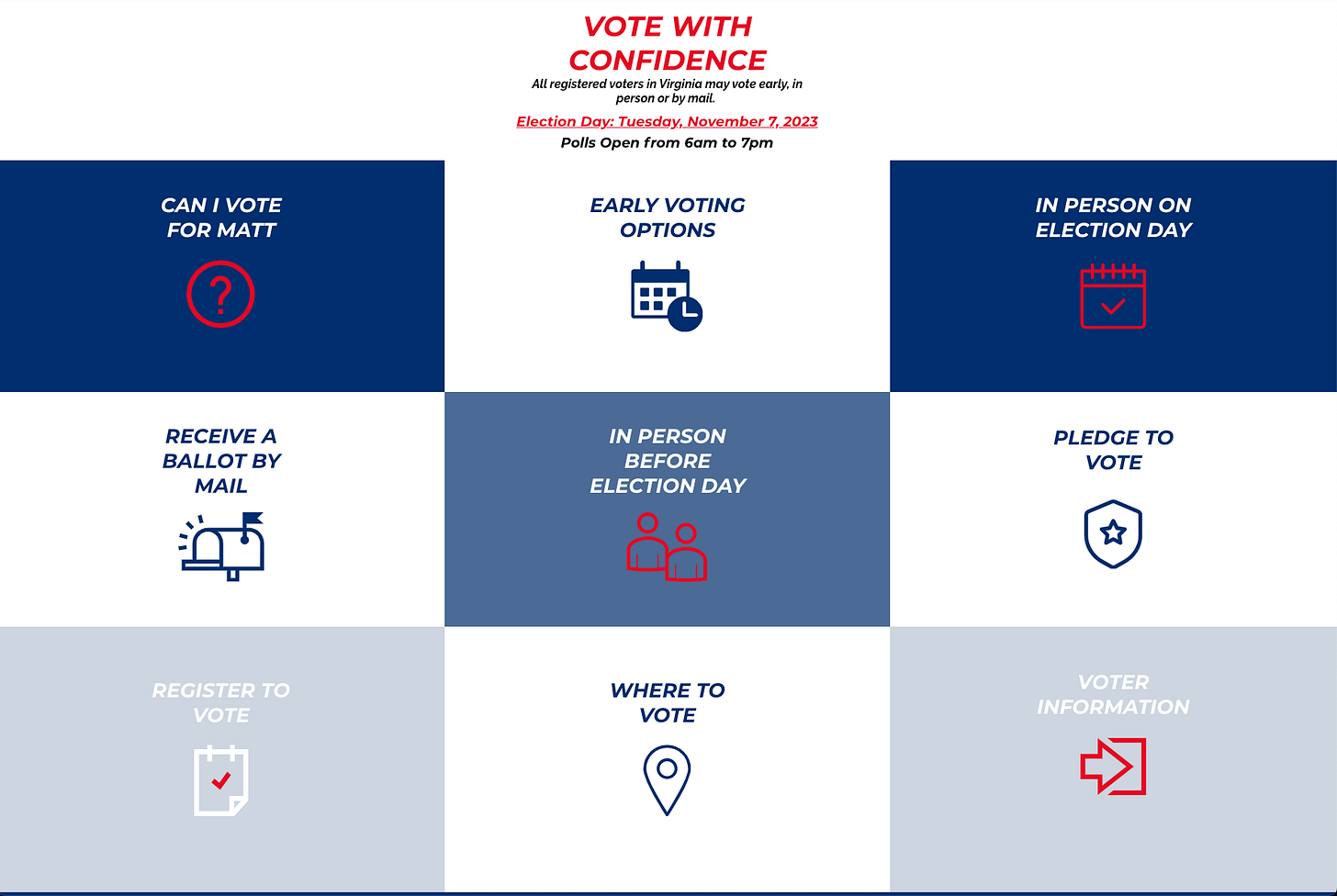
Do you know what to put on your campaign website?
When you start your campaign, the website is one of the first things you establish to promote your candidacy.
In the dynamic landscape of political campaigns, establishing a strong online presence is essential. I've collaborated with numerous new candidates each cycle, crafting websites that not only showcase their profiles but also deeply engage with voters.
Here, I share essential components and tips for building a campaign website that resonates with today's electorate.
The Core Elements of a Campaign Website
Home Page: Your Digital Handshake
Your home page is more than a virtual brochure; it's a 24/7 information hub, a virtual handshake, and the key to unlocking voter engagement. It should be captivating, easy to navigate, and reflective of your campaign's ethos.
Donate Button: Fueling Your Campaign
This feature deserves prominence. Ensure it's easily accessible, encouraging voters to support your campaign financially.
About Page: Sharing Your Story
Voters seek connection. Your 'About' page should present your background, experience, and motivation for public service. Use visuals, quotes, and testimonials to add depth and authenticity.
Issues Page: Clear Stance on Key Matters
Voters prioritize issues like taxes, education, and the economy. Each major issue deserves its own section with concise stances and proposed solutions. Don’t just talk about the problem; tell the voter what you’ll do to fix it. Enhance these pages with infographics, videos, and interactive elements.
Voting Information: Empowering Voters
Voting complexities often confuse voters. Offer a comprehensive guide with timelines, maps, resources, and FAQs to simplify the process and encourage participation.
Campaign Calendar: Personal Engagement
Your campaign schedule is vital. List your appearances and include a feature for voters to invite you to their events or communities.
News Section: Positive Coverage
Highlight your media appearances and positive news coverage, reinforcing your campaign's momentum and credibility.
Endorsements: Social Proof
Display endorsements from individuals and organizations. This adds credibility and showcases widespread support.
Share Your Socials: Connecting Online
Link to all your social media platforms to foster supporter interaction and community building.
Volunteer Section: Celebrating the Backbone of Your Campaign
Make the volunteer sign-up section prominent, acknowledging the crucial role volunteers play in your campaign.
Beyond the Basics: Making Your Website Stand Out
Regular Updates: A Living Entity
Your website should evolve with your campaign. Regularly update it with fresh content, multimedia, and timely announcements.
Mobile-Friendly and Accessible
Ensure your website is accessible to everyone and optimized for mobile devices.
Reflect Your Campaign's Spirit
Your website should mirror your campaign's values and passion. It's not just about information but also about inspiration.
Bonus Tip: Leverage Analytics
Use analytics tools to understand visitor behavior. This insight helps you refine your content to better meet your audience's needs.
Conclusion: Building a Voter-Centric Website
By integrating these elements, your campaign website transforms from a static presence to a dynamic hub of engagement and empowerment. Remember, your website is the digital face of your campaign; it should be as dynamic and compelling as your political vision.
If you want to make a significant digital impact with your campaign website, we at APL Consulting are eager to assist. We specialize in creating websites that not only inform but also inspire and mobilize your electorate. Our team is dedicated to crafting a digital platform that truly represents your campaign's message and vision.
For a personalized approach to your campaign's digital needs, contact me directly. Set up a consultation with our team by emailing APL@andrewloposser.com. We're excited to work with you to create a campaign website that resonates with voters and propels your political aspirations forward.






